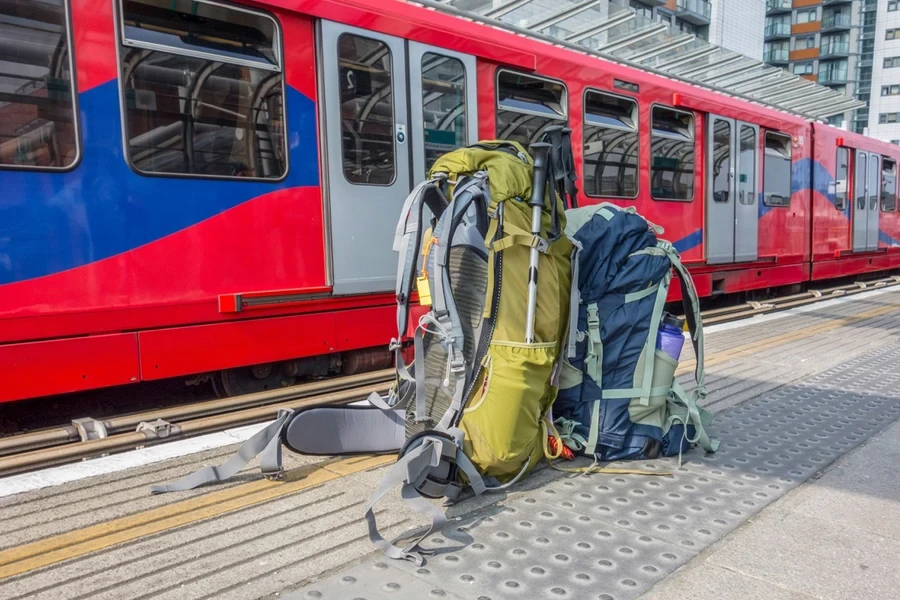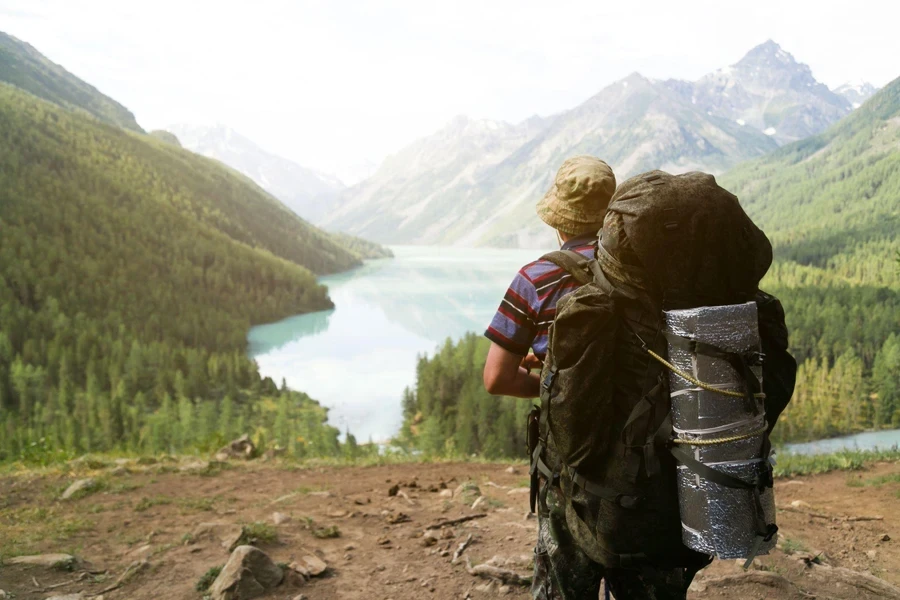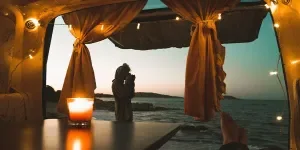Table of Contents
Introduction
Backpacking Packs Market Overview
Considerations of Selecting the Best Backpacking Packs
Best Backpacking Packs in 2024
Conclusion
Introduction
We delve into the evolving world of backpacking gear, focusing on the pivotal role of backpacking packs. This guide illuminates the latest innovations and trends shaping the 2024 market, emphasizing how these advancements enhance outdoor experiences. We scrutinize each pack’s functionality, from its ergonomic design to its ability to withstand diverse outdoor conditions, offering insights for both seasoned hikers and newcomers. Acknowledging the diverse needs of backpackers, our exploration covers a range of packs, each distinguished by unique features such as weight distribution, material durability, and additional functionalities.
Backpacking Packs Market Dynamics
The global backpack market, which includes backpacking packs, was valued at USD 15.90 billion in 2022 and is projected to grow from USD 17.21 billion in 2023 to USD 31.38 billion by 2030, exhibiting a compound annual growth rate (CAGR) of 8.96%. The hiking backpacks market, a sub-segment of the backpack market, is anticipated to grow to a valuation of USD 4.44 billion in 2023 and is projected to exhibit a CAGR of 5.5% from 2023 to 2033. The active backpack market, another sub-segment of the backpack market, was valued at USD 5.41 billion in 2022 and is expected to grow at a CAGR of 8.6%. The global active backpack market size is expected to reach USD 10.1 billion by 2030, rising at a market growth of 8.5% CAGR during the forecast period. Key players in the backpack market include Puma, Reebok, Fastrack, Toshiba Corporation, The North Face, Nike, Swiss Gear, Deuter, Samsonite International S.A., and Polestar.

Considerations of Selecting the Best Backpacking Packs
Selecting the right pack is crucial for both comfort and functionality. The choice of a backpacking pack should be a well-informed decision, considering several key factors.
Trip Durations:
- Short Hikes or Overnight Trips (1-2 nights): For these trips, a smaller backpack with a capacity ranging from 15-35 liters is typically sufficient. These packs are ideal for carrying essentials like a small sleeping bag, food, and a change of clothes.
- Weekend Trips (2-3 nights): A medium-sized backpack, usually between 35-50 liters, is suitable for weekend getaways. This size accommodates extra clothing, a bit more food, and potentially a small cooking system.
- Multi-Day Treks (3-5 nights): For longer trips, a pack in the range of 50-70 liters is recommended. This size allows for additional food supplies, a larger sleeping bag, and layers for varying weather conditions.
- Extended Expeditions (more than 5 nights): For journeys spanning several days, a large backpack with a capacity above 60 liters is essential. These packs can hold extensive gear, including provisions for various climates, additional food, and specialized equipment.

Adjustability:
Adjustability for Different Body Shapes:
- Torso Length: Key for ensuring the pack fits properly along the length of the back. Packs with adjustable torso lengths can be tailored to fit short, regular, or long torso sizes. This feature ensures the weight of the pack is optimally distributed along the wearer’s back, enhancing comfort and reducing strain.
- Shoulder Straps: Essential for adjusting the pack’s fit to accommodate different shoulder widths and shapes. Adjustable shoulder straps help distribute the pack’s weight evenly across the shoulders, preventing discomfort and potential strain.
Adjustability for Different Body Sizes:
- Hip Belts: Crucial for transferring the pack’s weight from the shoulders to the hips, especially important for larger body sizes. Adjustable hip belts can be tightened or loosened to fit snugly around the hips, providing stability and reducing the load on the shoulders.
- Chest Straps: Adjustable chest straps can be moved up or down and tightened to ensure the shoulder straps stay in place, providing additional stability and comfort, especially for those with broader or narrower chests.

Backpacking Weights
Standard Backpacking Base Weight:
Standard backpacking base weights range from 20 to 30 lbs, common among beginners or those using heavier gear. This range often includes more gear than necessary, reflecting a mix of weightier equipment and a tendency to overpack. Such weights are typically linked with conventional, affordable, and durable gear. For many, a standard base weight is the initial phase in the progression towards lighter backpacking as they gain experience and refine their gear choices.
Lightweight Backpacking:
Defined by a base weight of 10 to 20 lbs, lightweight backpacking usually sees backpackers leaning towards the upper end of this range. Achieving this weight class doesn’t necessarily require expensive gear but involves careful selection and packing of essentials. This backpacking style balances minimal load carrying with sufficient comfort and preparedness for various hiking conditions.
Ultralight Backpacking:
With a base weight below 10 lbs, ultralight backpacking demands significant concessions in weight and comfort, often requiring specialized gear. This minimalist approach focuses on the essentials for safety and comfort on the trail, sometimes at the expense of certain conveniences. Preferred by those valuing mobility and reduced strain, it involves choices like opting for lighter shelter alternatives or minimalistic gear.
Personal Backpacking Weight Targets:
Ideal backpacking load weights are highly individualized, depending on factors like body weight and personal comfort. Generally, a fully loaded backpack should not surpass 20% of the backpacker’s body weight, though aiming for 10-15% can offer better comfort and joint protection. Flexibility in these targets accommodates personal physical abilities and the unique demands of each trek, encouraging backpackers to strike their own balance between necessity and comfort.

Lighter Packs vs. Heavier Packs
Light Packs:
Light backpacks are preferred by ultralight enthusiasts and experienced thru-hikers due to their use of advanced materials like Dyneema Composite Fabric (DCF), Ultra High Molecular Weight Polyethylene (UHMWPE), and laminated nylon (X-Pac). These materials are chosen for their excellent strength-to-weight ratios, making the packs exceptionally light yet durable. Designed with minimalism in mind, these packs focus on carrying only the essentials, enhancing trail efficiency and reducing physical burden. However, the pursuit of ultra-lightweight often means compromising on some long-term durability and storage features. Ideal for those who prioritize a light load, these packs are perfect for keeping total pack weight below 30 pounds for a more comfortable and agile hiking experience.
Heavier Packs:
Heavier backpacks are crafted from sturdy materials like thick nylon or polyester, chosen for their ability to withstand heavy loads and rough use. They typically feature enhanced durability and are equipped with additional elements such as multiple compartments, strong zippers, and ample padding for comfort. These design aspects cater to carrying heavier loads, making these packs well-suited for longer expeditions or trips requiring more gear. The emphasis in heavier packs is on long-term resilience, ensuring they endure demanding journeys without losing integrity. Perfect for backpackers who carry significant gear or value durability over weight, these packs offer robustness and extensive organizational features.

Additional Features
Hydration Systems: Many backpacks now come with integrated hydration pouches or sleeves, allowing hikers to carry and easily access water bladders. This feature is particularly convenient for on-the-go hydration, eliminating the need to stop and unpack a water bottle.
Specialized Pockets for Quick Access: In addition to standard compartments, backpacks often feature specialized pockets designed for specific purposes. Some packs include stretchy back pockets, which are ideal for storing layers of clothing that might need to be quickly added or removed.
Rain Covers: Certain backpack models come with custom-fit rain covers, providing an additional layer of protection against the elements. This feature is especially useful in unpredictable weather conditions, ensuring that the contents of the pack remain dry.
Multiple Compartments for Organization: Organizational features in backpacking packs have evolved significantly. Packs often include multiple compartments, allowing for the separation and easy access of gear. This might include divided sections within the main compartment, as well as external pockets for items that need to be readily accessible.

Best Backpacking Packs in 2024
The 2024 backpacking market features a variety of exceptional packs, each uniquely designed to suit the diverse requirements of hikers and backpackers. Let’s examine the standout features of these top backpacking packs..
1. Deuter Aircontact Ultra 50+5: The Deuter Aircontact Ultra combines a sleek design with a unique suspension system. It has a 50-liter capacity, expandable by an additional 5 liters, making it versatile for both short and longer treks. The pack’s Aircontact Lite back system promotes ventilation, reducing perspiration by up to 15%. Its lightweight yet durable fabric and ergonomic design provide both comfort and resilience, appealing to hikers who value a balance between minimalism and functionality.
2. Gregory Baltoro 65: The Gregory Baltoro 65 is designed for backpackers carrying heavier loads. It offers an advanced suspension system that effectively distributes weight, minimizing strain on the body. This pack features a 3D AIR hipbelt and shoulder harness that adapts to the user’s body, ensuring a custom fit. With a 65-liter capacity, it provides ample space for extended trips, and its robust construction makes it ideal for rugged use. The Baltoro 65 is also known for its organizational capabilities, including a removable daypack for short excursions.
3. Hyperlite Mountain Gear 3400 Windrider: The 3400 Windrider from Hyperlite Mountain Gear is celebrated for its ultralight profile and waterproof construction. Utilizing Dyneema Composite Fabric, this pack combines durability with an impressively low weight, making it a top pick for ultralight backpackers. Its roll-top closure system contributes to its water-resistant capabilities, and the 55-liter volume is ample for a range of trips. The Windrider’s minimalist design doesn’t skimp on functionality, offering external mesh pockets for easy gear access.
4. TETON Sports Explorer 75L: Designed for extended adventures, the TETON Sports Explorer 75L is a robust pack built to handle heavy loads and rugged use. It offers a spacious main compartment and numerous pockets, including a sleeping bag compartment. The pack features a multi-position torso adjustment system, suitable for a wide range of body sizes. Its padded back panel and shoulder straps are designed for comfort, and the integrated rain cover adds an extra layer of weather protection.
5. Osprey Exos 58: Renowned for its lightweight design, the Osprey Exos 58 is a favorite among backpackers who prioritize weight savings without sacrificing essential features. This pack stands out for its AirSpeed™ ventilated trampoline suspended mesh back panel, ensuring comfort and breathability during long hikes. Its ExoForm™ harness and hipbelt, coupled with a 58-liter capacity, make it an excellent choice for multi-day trips. Additionally, the Exos 58 includes hip belt pockets and a stretchy back pocket, providing convenient access to essential items on the go.

Conclusion
The 2024 range of backpacking packs presents a dynamic market opportunity, showcasing products that cater to a spectrum of outdoor activities, from agile day trips to extensive, rugged excursions. For business professionals and retailers, this diversity highlights the significance of selecting and stocking packs that align with the specific demands and preferences of their target audience. Staying abreast of these evolving trends and features in backpacking gear is essential for meeting the needs of an ever-expanding customer base in the outdoor industry.




